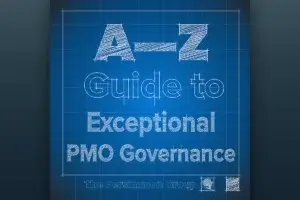When you’re in military situations, clear and concise communication can mean the difference between life and death. It’s why we use techniques such as SITREP and BLUF. In business, effective communication is also critical, in its own way. Here is how you can use these techniques at work and why they’re important.
Clear, concise communication gets the job done.
Soldiers are trained to communicate over the radio early in their career. Talking on a radio is not the same as a phone. Brevity is key, and the system in place to communicate requires short but complete communication. It looks something like this:
“Reaper 6, this is Reaper 7, Alpha team is moving through checkpoint Tango at this time, we are green on class 1 and red on class 3. Request resupply at objective bravo.”
This may be hard to understand for some, but to a military commander, this is a SITREP that provides multiple bits of information in a single sentence. To decipher this, here is what it means:
“Commander, this is the team leader, our team is on time and is moving without any issues. We have plenty of food and water but are getting low on gas and would like to get more delivered to us when we get to our destination.”
Alternatively, here is what an email in a less concise world might look like, which communicates a similar message.
Good Morning Paul,
Hope all is well and you had a great weekend. It was great to see you last week, we should do lunch again soon.
I wanted to give you a status update on the team’s progress on our project. We finally completed our testing of the new product, and Engineering has blessed off on the design. Right now, we are finalizing the plan to move forward and should be able to complete the project as scheduled.
We do have some concerns as the warehouse is running low on several items needed to finish the beta build for the prototype, which you can find in the attached spreadsheet. If we want to finish the prototype builds, we will need to get more of these items ordered prior to the start of manufacturing. If you have any questions regarding the attachment, feel free to call me.
Sincerely, Tom
As you can see, the same information was relayed but the time that is taken to communicate it is significantly different. The true requirements are not clear, and the status of the team is buried in the body of the email.
Most leaders today do not have time to read lengthy emails and pull the critical information from them. Most of our inboxes are full of bold titles signifying that they haven’t been read. This means one of two things, you are not receiving communication that utilizes a BLUF approach that you can quickly digest and act on, or you are getting emails that have no relevance to you. They are just white noise. So how do you minimize the noise?
Create a communication system
One option to ensure clear, concise, and complete communication is to create standard communication templates like who, what, when, where, why, requirements or (5WR). See the example below.
Paul,
Who: New Product Design Team
What: Finished the prototype design
When: On schedule
Where: N/A
Why: To move forward with prototype builds
Requirements: Critical parts shortages require procurement and supply chain involvement or project schedule will slip.
Respectfully, Tom
Don’t be afraid to take charge of the type and method of communication within your team. It will feel strained in the beginning, but over time and with some modification, the team will begin to embrace the time saved. Having formatted communications for your different business processes can save time, money, and create a less strained environment for your business. Before you know it, you will be that military leader who has a communication system that provides all the data needed to make critical decisions on the corporate battlefield.
Our guest blogger is Paul Maness, a Major in the United States Army Reserve and a Plant Manager for the manufacturing company, Pregis Intellipack. A U.S. Army Ranger Leader School and Airborne School graduate, Paul has successfully commanded two Companies, one during a deployment to Afghanistan and a platoon in Iraq. His Military accomplishments include being awarded three Bronze Star Medals, The Combat Action Badge for service in a combat zone, and the Meritorious Service Medal. Paul is passionate about leadership and employee engagement. Paul writes and speaks about leadership lessons from the Military that can be applied to all organizations today. For more, visit www.heavyleadership.com.











